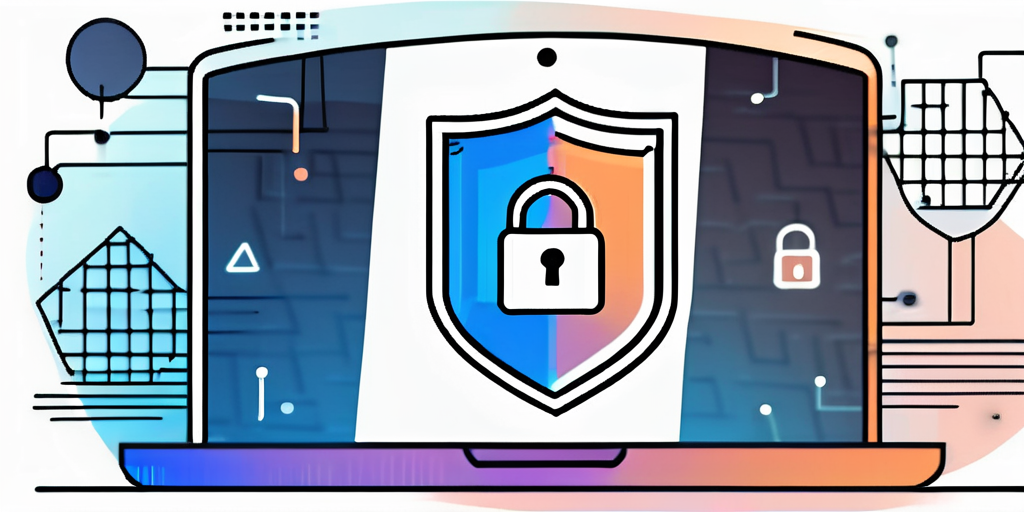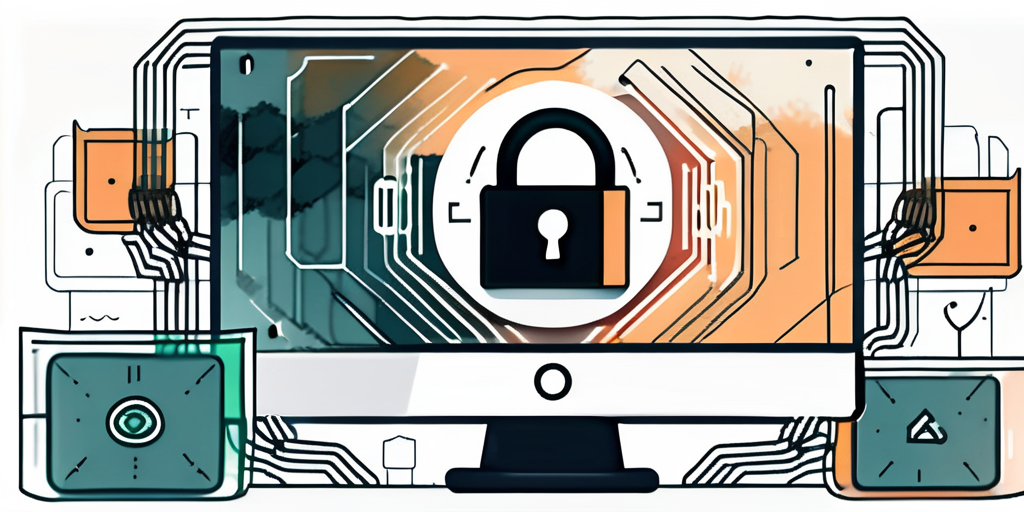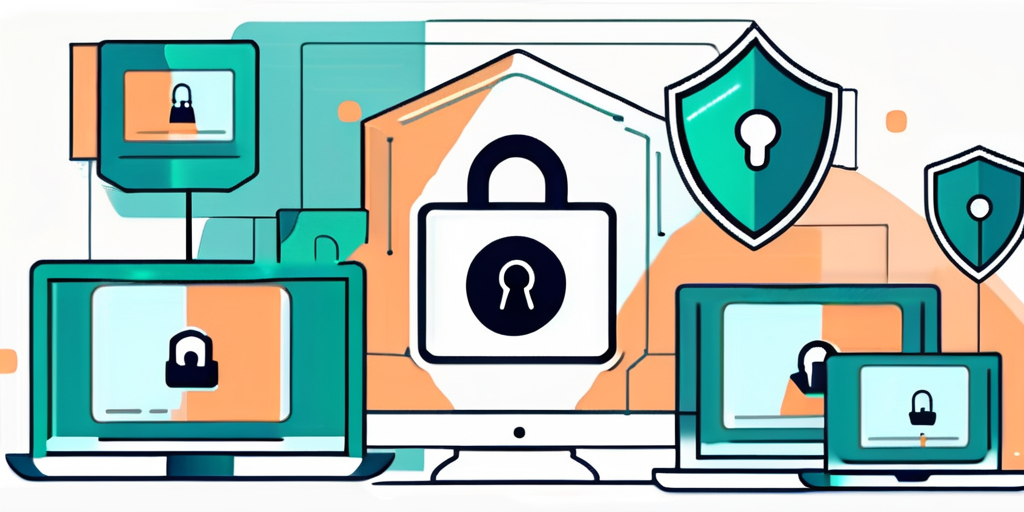Updated July 12, 2025
Zoom has become one of the most popular video conferencing platforms, especially during the pandemic when remote work and virtual meetings have become the norm. However, concerns about Zoom’s security have also emerged with its popularity. In this article, we will address the various security concerns related to Zoom and explore the measures taken by the platform to enhance security. We will also provide some best practices for secure Zoom meetings.
Understanding Zoom’s Security Features
Zoom is committed to ensuring the privacy and protection of its users through a robust set of security features. Let’s delve deeper into these features and explore their significance.

Encryption in Zoom Calls
Encryption is fundamental to any secure communication platform, and Zoom recognizes its importance. To safeguard the data exchanged during meetings, Zoom employs end-to-end encryption. This means the information is encrypted and can only be decrypted by the intended recipients, ensuring confidentiality.
However, it is essential to note that Zoom faced criticism for initially claiming to provide end-to-end encryption when, in reality, it offered transport encryption. This meant that while the data was encrypted during transit, it was still accessible to Zoom. Nonetheless, Zoom has addressed this concern and implemented stronger encryption measures to enhance user security.
Role of Passwords in Zoom Meetings
Passwords play a pivotal role in securing Zoom meetings and preventing unauthorized access. By requiring participants to enter a password before joining a meeting, Zoom adds an additional layer of security. This ensures that only individuals with the password can attend the session, giving the host control over the meeting’s attendees.
Zoom provides options for automatically generating random passwords, reducing the risk of participants using weak or easily guessable passwords. This further strengthens the security of Zoom meetings and mitigates the potential for unauthorized entry.
Waiting Rooms and Their Importance
Zoom introduced the concept of waiting rooms to augment security measures. When enabled, participants are placed in a virtual waiting room before the host grants them access to the meeting. This feature empowers the host to verify participants and admit only those who are expected to attend, adding an extra level of authentication.
Waiting rooms safeguard meetings against uninvited guests or individuals attempting to disrupt them. By allowing hosts to screen participants before granting entry, Zoom ensures that only authorized individuals can join the meeting, enhancing overall security and maintaining the integrity of the session.
Additional Security Measures
Beyond encryption, passwords, and waiting rooms, Zoom offers several other security features to protect user privacy. These include:
- Meeting Lock: Hosts can lock a meeting once all expected participants have joined, preventing any additional individuals from joining without the host’s permission.
- Screen Sharing Controls: Zoom provides hosts with the ability to control screen sharing, allowing them to restrict this feature to specific participants or disable it altogether.
- Participant Actions: Hosts can manage participant actions, such as disabling private chat or preventing participants from renaming themselves, to maintain a secure and professional meeting environment.
- Reporting and Monitoring: Zoom enables hosts to report disruptive participants and provides monitoring tools to ensure compliance with security guidelines.
By offering these additional security measures, Zoom empowers hosts to customize their meetings according to their specific security requirements, fostering a safe and secure virtual environment.
In conclusion, Zoom’s commitment to user security is evident through its comprehensive security features. From encryption and passwords to waiting rooms and additional controls, Zoom strives to provide a secure platform for virtual meetings and collaboration.
Common Security Concerns in Zoom
While Zoom has implemented several security features, some security concerns have raised eyebrows and caused users to question the platform’s security practices. Let’s examine a couple of these concerns.

Zoombombing: An Overview
Zoombombing refers to the act of unauthorized individuals joining Zoom meetings and disrupting them by sharing inappropriate content or causing disturbances. This raised concerns about the reliability of Zoom’s meeting links and the vulnerability of meetings to external interference.
To address this issue, Zoom changed its default settings, such as the requirement of passwords and waiting rooms, as mentioned earlier. Users are also encouraged to share meeting links only with trusted participants and avoid making them public in places where unauthorized individuals might gain access.
Zoom has implemented additional security measures to combat Zoombombing. These include the ability for hosts to lock meetings once all the participants have joined, preventing any further unauthorized access. Additionally, Zoom has introduced a feature that allows hosts to remove disruptive participants from meetings, ensuring a safer and more secure environment for all attendees.
Data Privacy Issues
Protecting user data and privacy has become a significant concern for any online platform, and Zoom is no exception. Reports emerged about Zoom sharing user data with third-party applications, including Facebook, without obtaining proper consent.
In response, Zoom has changed its privacy policies, providing users with more control over their data and allowing them to opt out of certain data-sharing practices. These measures aim to address the data privacy concerns that were raised.
Additionally, Zoom has undergone independent security audits and engaged with third-party experts to ensure that its data privacy practices align with industry standards. This commitment to transparency and accountability demonstrates Zoom’s dedication to protecting user privacy.
Concerns Regarding End-to-End Encryption
As mentioned earlier, Zoom initially faced criticism for not providing true end-to-end encryption. This is a fundamental concern for users who prioritize the highest level of security for their communications.
Zoom has acknowledged this concern and has tried to address it by announcing the development of a true end-to-end encryption feature. This feature aims to give users greater control and assurance over the security of their communications on the platform.
Zoom has collaborated with leading encryption experts to ensure that its implementation of end-to-end encryption is robust and reliable. By leveraging the expertise of these professionals, Zoom aims to deliver a secure communication environment that meets the highest encryption standards.
It is important to note that while Zoom works on implementing end-to-end encryption, it currently provides strong encryption for meetings and communications. This encryption ensures that data transmitted through Zoom is protected and secure from unauthorized access.
Steps Taken by Zoom to Enhance Security
Zoom is committed to addressing the security concerns raised by its users and has taken several steps to enhance the overall security of its platform. Let’s explore some of these measures.
Introduction of Two-Factor Authentication
Two-factor authentication (2FA) adds an extra layer of security by requiring users to provide two types of identification when logging into their Zoom accounts. This feature helps prevent unauthorized access, ensuring only the intended user can log in.
Enabling 2FA is a best practice that users are highly encouraged to adopt to enhance the security of their Zoom accounts.
With the increasing number of cyber threats and hacking attempts, users must take advantage of this added security measure. By requiring an additional verification form, such as a unique code sent to their mobile device, Zoom ensures that even if a user’s password is compromised, their account remains protected.
Zoom has enabled the process of 2FA to be user-friendly and accessible. Users can easily activate this feature through their account settings, providing a seamless experience while significantly improving security.
Updates to Privacy Policies
Zoom has updated its privacy policies to address concerns related to data sharing and privacy. These updates give users more control over their personal information and ensure their data is handled securely and transparently.
Users should familiarize themselves with these updated policies to understand how their data is protected and how Zoom handles their information.
One of the key updates to privacy policies is the clarification of data-sharing practices. Zoom explicitly states that it does not sell user data to third parties. This reassurance is crucial in building trust and confidence among users, as it demonstrates Zoom’s commitment to protecting their privacy.
Additionally, Zoom has implemented measures to allow users to control their data. Users now can manage their data settings, including the option to delete their data from Zoom’s servers if they choose to do so.
Enhanced Encryption Measures
Recognizing the importance of encryption, Zoom has focused on improving its encryption measures. The platform has released updates that strengthen the encryption protocols used during meetings, making communications even more secure.
These enhanced encryption measures improve security and give users peace of mind when using Zoom for sensitive conversations.
Zoom now utilizes end-to-end encryption, ensuring only intended participants can access the meeting content. This level of encryption prevents any unauthorized individuals from intercepting or eavesdropping on the communication.
Furthermore, Zoom has implemented measures to protect against encryption key tampering. This ensures that the encryption keys used to secure the meetings are not compromised, further enhancing the platform’s security.
By continuously improving its encryption measures, Zoom demonstrates its commitment to providing a secure environment for users to collaborate and communicate.
Best Practices for Secure Zoom Meetings
While Zoom continues to enhance its security measures, users can also take proactive steps to ensure the security of their Zoom meetings. Here are some best practices to consider:

Setting Up Secure Meeting Settings
Hosts should familiarize themselves with Zoom’s various security settings and utilize them to their advantage. This includes enabling features such as passwords and waiting rooms, as well as restricting screen sharing to minimize the risk of unauthorized access or disruptions during meetings.
One important security feature hosts should consider enabling is using passwords for meetings. Hosts can ensure that only invited participants can join the meeting by setting up a password. This adds an extra layer of security and prevents unauthorized individuals from joining the call.
Another practical security setting is the waiting room feature. This feature allows hosts to control who enters the meeting by placing participants in a virtual waiting room before granting access. This way, hosts can verify the identity of each participant before allowing them into the meeting, reducing the risk of uninvited guests joining.
Hosts should consider restricting screen-sharing capabilities to prevent any unwanted or inappropriate content from being displayed during the meeting. By limiting screen sharing to the host or specific participants, hosts can maintain control over the content and avoid potential disruptions or security breaches.
Managing Participants Effectively
When hosting a Zoom meeting, it’s crucial to manage participants effectively. One way to achieve this is by assigning a co-host who can assist in monitoring attendees and muting participants when necessary. This ensures that the meeting runs smoothly and minimizes the risk of any disruptions or unauthorized activities.
In addition to assigning a co-host, hosts should be vigilant and promptly remove disruptive participants from the meeting. To maintain a productive and secure meeting environment, hosts can utilize Zoom’s participant management features, such as muting or removing participants.
Hosts should encourage participants to use the “raise hand” feature when they have something to say or contribute. This helps to maintain order and prevent participants from speaking over each other, ensuring that everyone has a chance to be heard and reducing the potential for confusion or misunderstandings.
Regularly Updating Zoom Software
Zoom frequently releases software updates that include security enhancements and bug fixes. To ensure the highest level of security, users should regularly update their Zoom software to the latest version. These updates often address any potential vulnerabilities that malicious actors could exploit.
By keeping Zoom software up to date, users can take advantage of the latest security features and improvements, ensuring that their meetings are protected from known security risks. It is recommended to enable automatic updates or regularly check for updates manually to stay on top of any new releases.
Conclusion
Zoom acknowledges the security concerns raised by users and has taken significant steps to enhance the platform’s security. By implementing robust security features, addressing common concerns, and promoting best practices, Zoom aims to provide a secure environment for virtual meetings. However, users must remain vigilant and follow recommended guidelines to ensure the security and privacy of their Zoom meetings.
As you’ve seen, maintaining robust security in a digital environment is critical, especially when using platforms like Zoom for your business communications. At Blue Goat Cyber, we understand the complexities of cybersecurity and are dedicated to helping businesses like yours stay protected. With our expertise in medical device cybersecurity, penetration testing, and compliance with HIPAA, FDA, SOC 2, and PCI standards, we’re well-equipped to secure your operations against cyber threats. As a Veteran-Owned business, we’re committed to safeguarding your data with the highest level of diligence. Contact us today for cybersecurity help!
